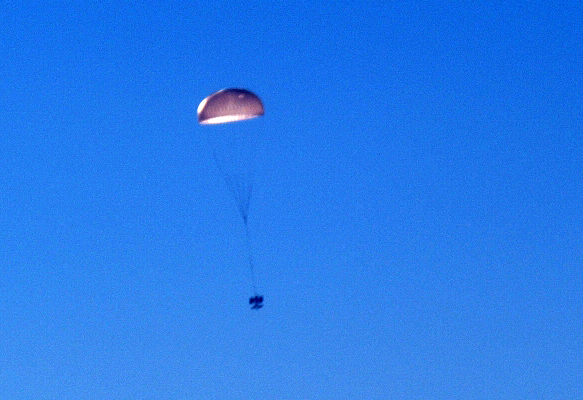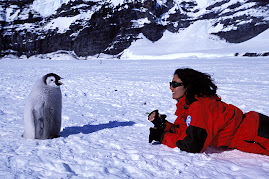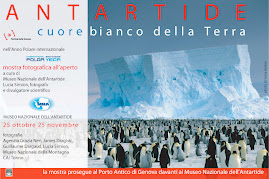He recalls that his passion for the extreme probably began when he first saw the snow, during a school holiday at the Tongariro National Park, at the age of sixteen. He was a young teenager living in the countryside and he had never seen the magic of snow. Since that day, Sir Edmund Hillary has spent a great deal of his life among snows and ice, blizzards and storms, high snowy peaks close to the sky and turbulent rivers flowing down to the sea. In May 1953 he was the first to reach the summit of Mt Everest – with Tenzing Norgay. Thanks to that success another great adventure would keep him among the snows for almost two years, in the coldest, windiest and iciest continent  on Earth : the Commonwealth Trans-Antarctic Expedition (TAE), a joint-venture between Great Britain and New Zealand, aimed to cross Antarctica from the Weddell Sea to the Ross Sea. It was the dream dreamt by Shackleton, forty years earlier. Sir Ed Hillary and Sir Vivian Fuchs were co-leaders in this great expedition, which took place during the International Geophysical Year in 1957-58. Sir Ed Hillary established New Zealand’s Scott Base on Ross Island, then made a long and hazardous journey over the Ross Ice Shelf and across the Transantarctic Mountains, driving small Ferguson tractors, to trace the route for Fuchs and set fuel caches along the way. Thanks to Hillary’s determination expertise and bravery (as well as with the help of the Americans) the performance of the Ross Sea Party was a great success. Hillary therefore decided to push on to the South Pole, where he arrived in January 1958, the first man to reach the Pole by terrestrial transportation.
on Earth : the Commonwealth Trans-Antarctic Expedition (TAE), a joint-venture between Great Britain and New Zealand, aimed to cross Antarctica from the Weddell Sea to the Ross Sea. It was the dream dreamt by Shackleton, forty years earlier. Sir Ed Hillary and Sir Vivian Fuchs were co-leaders in this great expedition, which took place during the International Geophysical Year in 1957-58. Sir Ed Hillary established New Zealand’s Scott Base on Ross Island, then made a long and hazardous journey over the Ross Ice Shelf and across the Transantarctic Mountains, driving small Ferguson tractors, to trace the route for Fuchs and set fuel caches along the way. Thanks to Hillary’s determination expertise and bravery (as well as with the help of the Americans) the performance of the Ross Sea Party was a great success. Hillary therefore decided to push on to the South Pole, where he arrived in January 1958, the first man to reach the Pole by terrestrial transportation.
Fifty years later, during the fourth International Polar year, great memories of the TAE expedition are still hanging around. Scott Base has celebrated its Fiftieth Anniversary, books are being published on the history of New Zealand and Antarctica, photographic exhibitions are being held, talks are being given. But one of the most fantastic records is well kept between the walls in the office of Antarctica New Zealand, at the International Antarctic Centre, in Christchurch. It is the fabulous collection of pictures from the TAE : « There are more then 1300 photos and negatives », says Ursula Ryan, who has looked after the Pictorial Collection since 2005, as part of her role as Information Advisor with Antarctica New Zealand, the NZ Antarctic programme. « Of these 1300 photos of the TAE, 170 are already digitized », she explains. Mrs. Ryan takes me the Archive, where temperature and humidity are kept under control. The TAE photos and negatives are archived one by one, each with its contact print. Most are 6 x 6 negatives. It looks like a treasure. I asked Ursula to pick her favorite TAE photo. On the computer screen she shows the picture of the TAE HUT, the first building of Scott Base, now an Historic monument under the Antarctic Treaty. « I like this photo because we see the TAE Hut, the New Zealand flag flying beside the hut and boxes of materials still lying around », says Ursula Ryan. « The landscape in the background is fantastic, with Mount Discovery peering just over the roof of the Hut. I really like that mountain ». This photograph was published in « Ice Age, Celebrating 50 years of New Zealand in Antarctica », published in June 2007 by Claire Duncan, in conjunction with Antarctica NZ, with contributions of John Claydon, Bill Cranfield, David Harrowfield and Baden Norris. In the same booklet is published a photo of the Hut today.
looked after the Pictorial Collection since 2005, as part of her role as Information Advisor with Antarctica New Zealand, the NZ Antarctic programme. « Of these 1300 photos of the TAE, 170 are already digitized », she explains. Mrs. Ryan takes me the Archive, where temperature and humidity are kept under control. The TAE photos and negatives are archived one by one, each with its contact print. Most are 6 x 6 negatives. It looks like a treasure. I asked Ursula to pick her favorite TAE photo. On the computer screen she shows the picture of the TAE HUT, the first building of Scott Base, now an Historic monument under the Antarctic Treaty. « I like this photo because we see the TAE Hut, the New Zealand flag flying beside the hut and boxes of materials still lying around », says Ursula Ryan. « The landscape in the background is fantastic, with Mount Discovery peering just over the roof of the Hut. I really like that mountain ». This photograph was published in « Ice Age, Celebrating 50 years of New Zealand in Antarctica », published in June 2007 by Claire Duncan, in conjunction with Antarctica NZ, with contributions of John Claydon, Bill Cranfield, David Harrowfield and Baden Norris. In the same booklet is published a photo of the Hut today.
A selection of the TAE photos can be seen on this website :
http://www.scottbase50years.co.nz
Antarctica New Zealand : http://www.antarcticanz.govt.nz
Lucia Simion and Ursula Ryan
PHOTOS: TAE632, Antarctica NZ Pictorial Collection
E. Barnes, Antarctica NZ Pictorial Collection K250-06/07
 on Earth : the Commonwealth Trans-Antarctic Expedition (TAE), a joint-venture between Great Britain and New Zealand, aimed to cross Antarctica from the Weddell Sea to the Ross Sea. It was the dream dreamt by Shackleton, forty years earlier. Sir Ed Hillary and Sir Vivian Fuchs were co-leaders in this great expedition, which took place during the International Geophysical Year in 1957-58. Sir Ed Hillary established New Zealand’s Scott Base on Ross Island, then made a long and hazardous journey over the Ross Ice Shelf and across the Transantarctic Mountains, driving small Ferguson tractors, to trace the route for Fuchs and set fuel caches along the way. Thanks to Hillary’s determination expertise and bravery (as well as with the help of the Americans) the performance of the Ross Sea Party was a great success. Hillary therefore decided to push on to the South Pole, where he arrived in January 1958, the first man to reach the Pole by terrestrial transportation.
on Earth : the Commonwealth Trans-Antarctic Expedition (TAE), a joint-venture between Great Britain and New Zealand, aimed to cross Antarctica from the Weddell Sea to the Ross Sea. It was the dream dreamt by Shackleton, forty years earlier. Sir Ed Hillary and Sir Vivian Fuchs were co-leaders in this great expedition, which took place during the International Geophysical Year in 1957-58. Sir Ed Hillary established New Zealand’s Scott Base on Ross Island, then made a long and hazardous journey over the Ross Ice Shelf and across the Transantarctic Mountains, driving small Ferguson tractors, to trace the route for Fuchs and set fuel caches along the way. Thanks to Hillary’s determination expertise and bravery (as well as with the help of the Americans) the performance of the Ross Sea Party was a great success. Hillary therefore decided to push on to the South Pole, where he arrived in January 1958, the first man to reach the Pole by terrestrial transportation.Fifty years later, during the fourth International Polar year, great memories of the TAE expedition are still hanging around. Scott Base has celebrated its Fiftieth Anniversary, books are being published on the history of New Zealand and Antarctica, photographic exhibitions are being held, talks are being given. But one of the most fantastic records is well kept between the walls in the office of Antarctica New Zealand, at the International Antarctic Centre, in Christchurch. It is the fabulous collection of pictures from the TAE : « There are more then 1300 photos and negatives », says Ursula Ryan, who has
 looked after the Pictorial Collection since 2005, as part of her role as Information Advisor with Antarctica New Zealand, the NZ Antarctic programme. « Of these 1300 photos of the TAE, 170 are already digitized », she explains. Mrs. Ryan takes me the Archive, where temperature and humidity are kept under control. The TAE photos and negatives are archived one by one, each with its contact print. Most are 6 x 6 negatives. It looks like a treasure. I asked Ursula to pick her favorite TAE photo. On the computer screen she shows the picture of the TAE HUT, the first building of Scott Base, now an Historic monument under the Antarctic Treaty. « I like this photo because we see the TAE Hut, the New Zealand flag flying beside the hut and boxes of materials still lying around », says Ursula Ryan. « The landscape in the background is fantastic, with Mount Discovery peering just over the roof of the Hut. I really like that mountain ». This photograph was published in « Ice Age, Celebrating 50 years of New Zealand in Antarctica », published in June 2007 by Claire Duncan, in conjunction with Antarctica NZ, with contributions of John Claydon, Bill Cranfield, David Harrowfield and Baden Norris. In the same booklet is published a photo of the Hut today.
looked after the Pictorial Collection since 2005, as part of her role as Information Advisor with Antarctica New Zealand, the NZ Antarctic programme. « Of these 1300 photos of the TAE, 170 are already digitized », she explains. Mrs. Ryan takes me the Archive, where temperature and humidity are kept under control. The TAE photos and negatives are archived one by one, each with its contact print. Most are 6 x 6 negatives. It looks like a treasure. I asked Ursula to pick her favorite TAE photo. On the computer screen she shows the picture of the TAE HUT, the first building of Scott Base, now an Historic monument under the Antarctic Treaty. « I like this photo because we see the TAE Hut, the New Zealand flag flying beside the hut and boxes of materials still lying around », says Ursula Ryan. « The landscape in the background is fantastic, with Mount Discovery peering just over the roof of the Hut. I really like that mountain ». This photograph was published in « Ice Age, Celebrating 50 years of New Zealand in Antarctica », published in June 2007 by Claire Duncan, in conjunction with Antarctica NZ, with contributions of John Claydon, Bill Cranfield, David Harrowfield and Baden Norris. In the same booklet is published a photo of the Hut today. A selection of the TAE photos can be seen on this website :
http://www.scottbase50years.co.nz
Antarctica New Zealand : http://www.antarcticanz.govt.nz
Lucia Simion and Ursula Ryan
PHOTOS: TAE632, Antarctica NZ Pictorial Collection
E. Barnes, Antarctica NZ Pictorial Collection K250-06/07



























